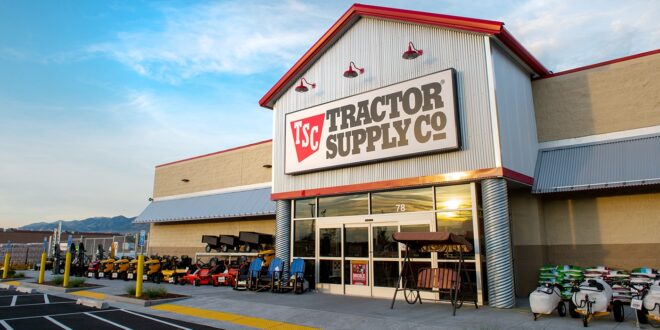Tractor Supply Company recently released its financial results for the second quarter of 2025.
Net sales for the company increased 4.5% in Q2, reaching $4.44 billion. This increase was primarily driven by new store openings and the growth in comparable store sales.
Comparable store sales saw a 1.5% increase in the second quarter, led by growth in year-round categories, like consumable, usable and edible products and consistent demand for spring seasonal items.
Diluted earnings per share increased 2.8% to $0.81, up from $0.79 in the second quarter of 2024.
“We are pleased with our second quarter performance, reflecting the continued strength of our core categories and strong execution despite a delayed spring,” says Hal Lawton, president and chief executive officer of Tractor Supply. “Our team delivered solid results by capturing market share and curating a product assortment that underscores our leadership in rural retail. I want to thank our 52,000 team members whose passion for Life Out Here and commitment to our customers make all the difference every day.”
Tractor Supply’s financial guidance for the fiscal year 2025 remains unchanged from prior reporting:
- Net sales to increase 4% to 8%
- Comparable store sales to increase 0% to 4%
- Earnings per diluted share to reach $2.00 to $2.18
“As we enter the back half of 2025, we remain confident in our outlook, are encouraged by the momentum carrying into the quarter and continue to believe in the durability of our model,” Lawton says. “Despite external pressures, including economic uncertainty and shifting tariffs, our year-to-date performance and visibility into the remainder of the year provide a solid foundation to reaffirm our 2025 financial outlook. With a largely U.S.-sourced assortment, strong vendor partnerships and a flexible, scalable supply chain, we are well-positioned to navigate near-term dynamics and deliver long-term value for our shareholders.”
During the Tractor Supply Q2 earnings call, the company defined its key drivers for financial growth, including disciplined product cost management and modest fixed cost deleverage. The company also outlined its tariff mitigation strategy it plans to implement.
 Hardware Retailing The Industry's Source for Insights and Information
Hardware Retailing The Industry's Source for Insights and Information






